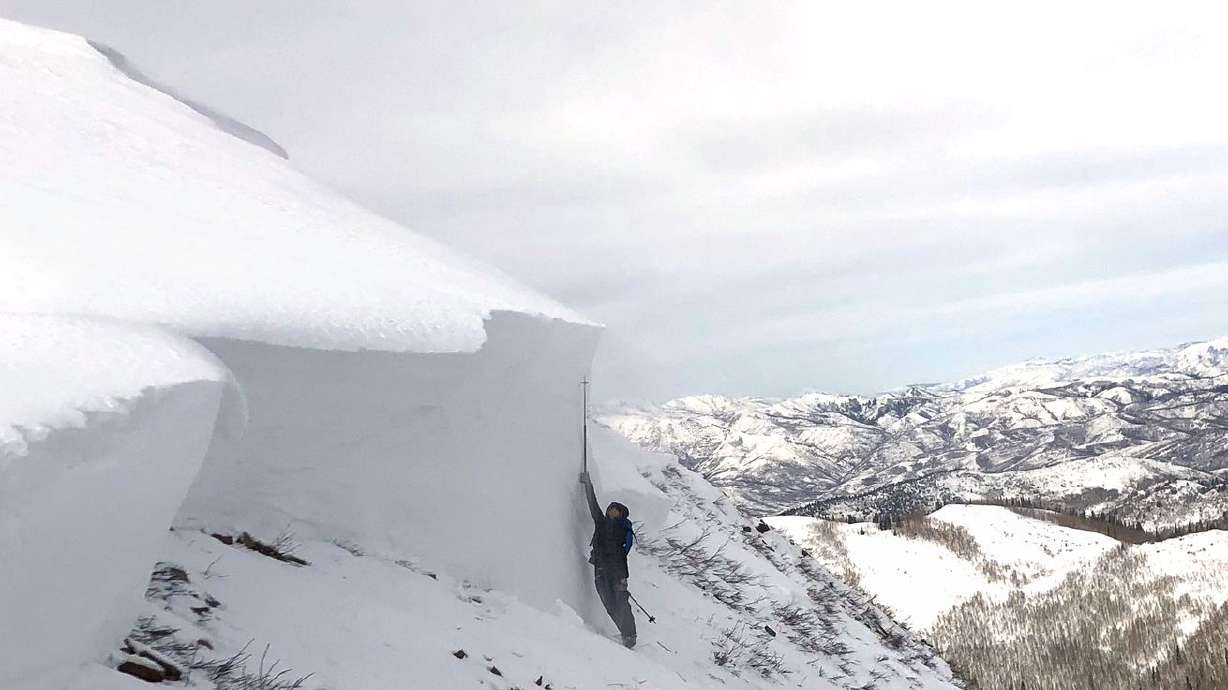Estimated read time: 3-4 minutes
This archived news story is available only for your personal, non-commercial use. Information in the story may be outdated or superseded by additional information. Reading or replaying the story in its archived form does not constitute a republication of the story.
SALT LAKE CITY — Just four days into the new year, there have been 17 reported avalanches across Utah, according to the Utah Avalanche Center.
Most occurred naturally, although some were a result of backcountry skiers, snowboarders or snowmobilers. There are likely more slides that went unreported.
Over the holiday weekend, avalanche danger for the Salt Lake-area mountains hovered between "high" and "considerable." And on Sunday, as many Utahns took to the mountains — some inside the resort boundary and some outside — the Central Wasatch saw some big avalanches.
Alta avalanche carries ski patrollers
A massive avalanche that was intentionally triggered at Utah's Alta Ski Area caught and briefly carried two ski patrollers over the weekend. The incident was caught on camera.
The avalanche was triggered on the East Greeley region of Alta using explosives strapped to bamboo rods. The rods are planted in the snow and the fuse is ignited, giving ski patrol time to get to safety.
Ski resorts in the West will often intentionally trigger avalanches with explosives so they can safely open terrain knowing that same avalanche won't occur while guests are skiing.
The video shows five charges exploding, followed by what looks like the entire slope pulling away.
In the far left of the screen, ski patrollers can be seen standing on the slope, visible only as small black dots. After the explosion, and as the avalanche propagates across the mountain, it catches one of them and carries them almost to the bottom of the slope.
While they're being carried, the patroller inflates their avalanche airbag, a backpack system designed to rapidly inflate and keep skiers on top of moving avalanche debris.
As the debris is settling, a patroller still at the top of the slope skis down to check on their colleague, who was not buried by the avalanche.
An Alta spokesperson said no patrollers were harmed in the incident.
Backcountry avalanche prompts DPS helicopter search
On Sunday another massive avalanche was reported in the Central Wasatch Mountains near Millcreek Canyon.
Triggered on Little Water Peak, the avalanche was roughly 800 feet wide and between 3 to 12 feet deep, according to the Utah Avalanche Center. It ran nearly 600 feet to the bottom of the basin.
The avalanche was reported by a backcountry skier who saw tracks in the snow from a skier or snowboarder near the ridge and feared someone had been caught in the slide. This prompted the Department of Public Safety to scour the area with a helicopter using a RECCO device, which can detect a chip implanted in certain skis and winter gear. They determined no one was caught in the slide.
Pictures from the Utah Avalanche Center taken the day after show forecaster Nikki Champion standing next to the crown, which is essentially the line in the snow where the avalanche breaks away. The crown towers over Champion, who holds a ski pole above her head for reference.
The avalanche occurred on a northeast facing slope and was a result of a persistent weak layer of faceted snow that acts almost like ball bearings. Utah had a snowy October, and on northern aspects at high elevation, much of that snow never melted. But after a dry November, the snow essentially rotted to create a faceted layer that doesn't adhere well to new accumulation.
The avalanche on Little Big Water is the kind of slide experts have been warning backcountry goers of — "those avalanches will kill you," the center's website currently reads.
With lots of snow expected in the coming days, the Utah Avalanche Center says the conditions are expected to worsen.









